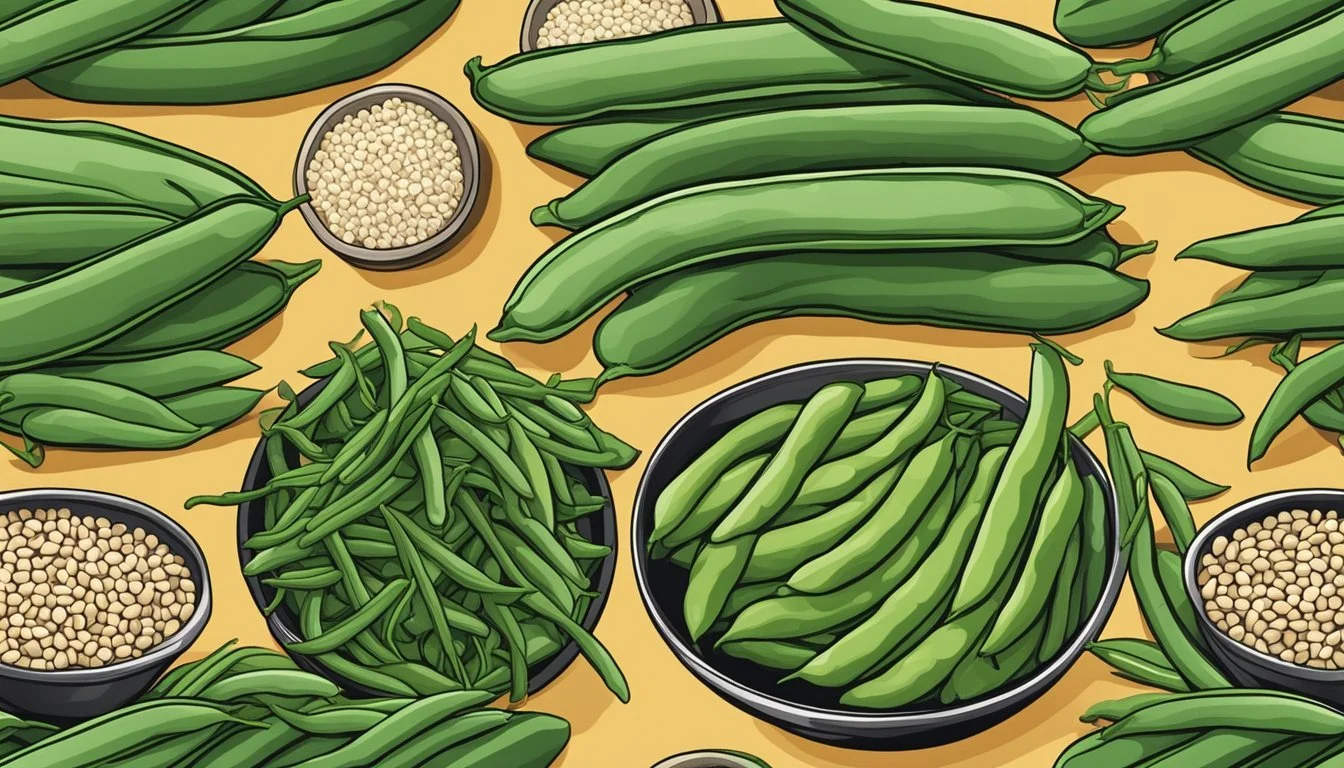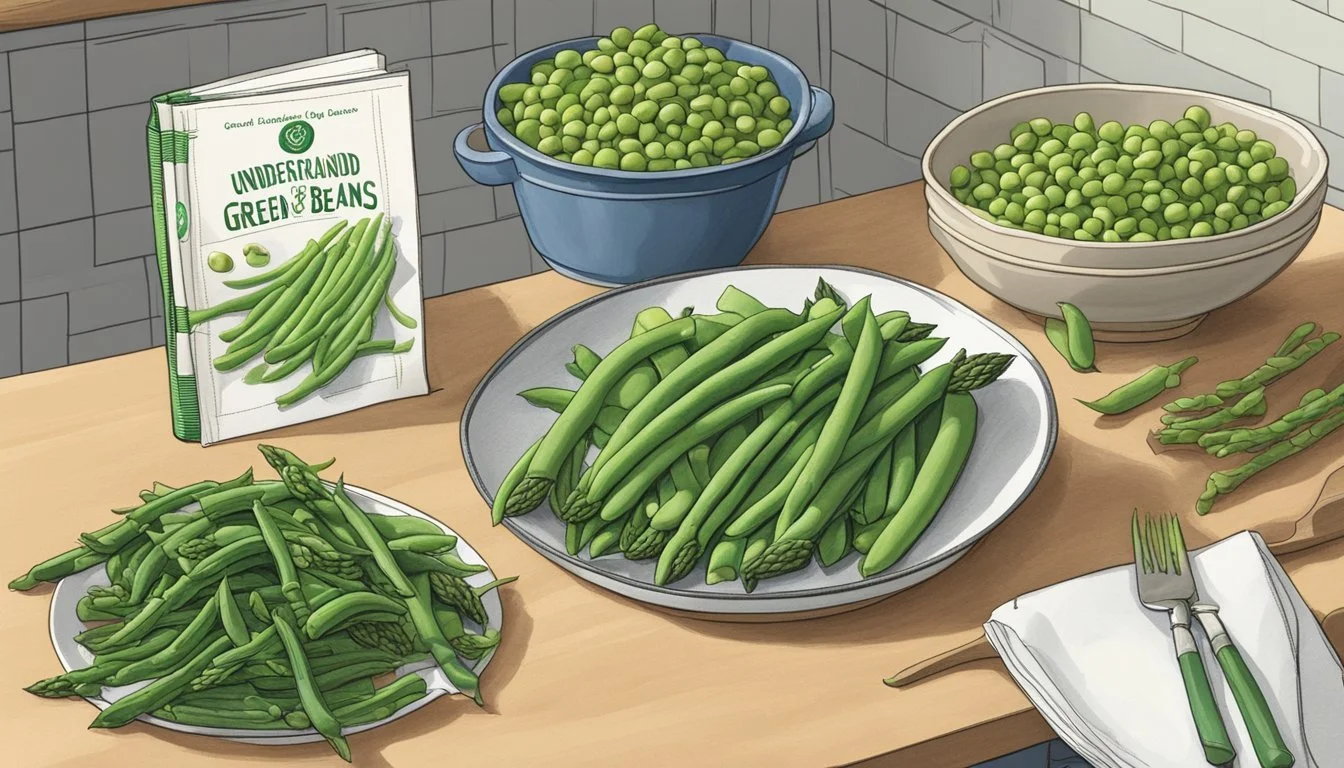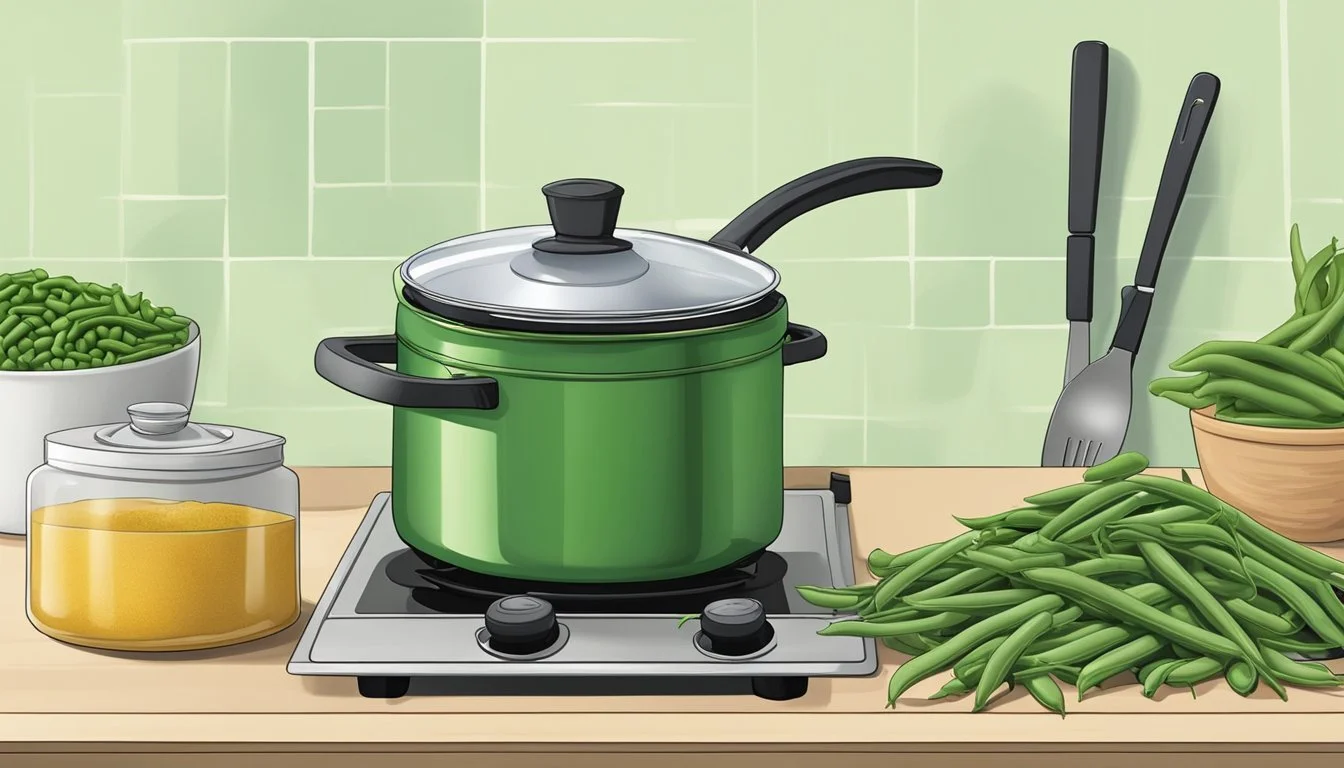Green Beans Substitutes
Tasty Alternatives for Every Recipe
Green beans are a versatile ingredient that can seamlessly fit into a variety of dishes. Whether you're looking to accommodate dietary restrictions or simply out of green beans, there are numerous substitutes that provide similar texture and flavor profiles.
Options like asparagus and wax beans are excellent alternatives, maintaining the dish's integrity while offering nutritious benefits. Asparagus, for example, closely resembles green beans in both taste and nutritional value. Broccoli and zucchini also stand out as highly adaptable substitutes, perfect for stir-fries, casseroles, and salads.
For those seeking convenience, canned green beans and haricot verts are reliable choices. Haricot verts, or French filet beans, offer a thinner version of traditional green beans, while canned green beans provide an easy-to-use, vitamin-packed substitute. Use these alternatives to ensure your favorite recipes remain delicious and satisfying.
Understanding Green Beans
Green beans are a popular vegetable known for their nutritious value and versatility in cooking. They have a distinctive taste and texture, making them a favorite in various dishes.
Nutritional Profile
Green beans offer a wealth of nutrients. They are low in calories and high in vitamins and minerals. A serving of green beans provides significant amounts of Vitamin C, Vitamin K, and Vitamin A. These vegetables are also a good source of fiber, which aids in digestion. In addition, green beans contain potassium and iron, contributing to heart health and improving oxygen transport in the blood. They are also rich in antioxidants and folate, which support overall cellular health and development.
Culinary Uses
Green beans are incredibly versatile in the kitchen. They can be used in a variety of dishes, from salads and casseroles to side dishes and soups. Common cooking methods include steaming, sautéing, boiling, and roasting. Each method brings out a unique flavor and texture in the beans. For example, steaming maintains their tender-crisp bite, while roasting can bring out an earthy flavor. Green beans are often seasoned with salt, garlic, and herbs to enhance their natural flavor. They can be enjoyed alone or combined with other vegetables and meats in a range of recipes.
Taste and Texture
The taste of green beans is subtly sweet with an earthy flavor. They have a crunchy texture when raw but become tender-crisp when cooked. This dynamic texture makes them a delightful addition to many dishes. When properly cooked, they still retain a slight crunch, which adds an interesting contrast to softer ingredients in mixed dishes. The flavor of green beans is mild enough to complement various seasonings and sauces, making them adaptable to different culinary styles.
Choosing Substitutes for Green Beans
Selecting the right substitute for green beans depends on the desired texture, taste, and nutritional content. Here are various options to consider, categorized by their type.
Similar Vegetables
Asparagus offers a close match in both texture and flavor to green beans. It's also versatile, adapting well to grilling, steaming, or sautéing. Asparagus is nutrient-rich, providing fiber, folate, and vitamins A, C, and E.
Wax Beans are almost identical to green beans in appearance and taste. They can be found fresh, frozen, or canned, making them a convenient option.
Broccoli works well in stir-fries, salads, and pasta dishes. Although its texture and flavor are different, it offers a nutritious alternative rich in vitamins A and C and fiber.
Legumes as Alternatives
Lentils provide a different texture but can be a good substitute in soups and stews. They are rich in protein and fiber, making them a nutritious choice.
Split Peas are another option for soups. Their creamy texture when cooked adds a unique element to dishes.
Edamame (green soybeans) can be used in salads or stir-fries for a protein-packed alternative. They offer a crisp texture and a subtle, nutty flavor.
Baby Lima Beans and Baby Butter Beans offer a creamy texture suitable for soups and stews. They also bring a mild flavor and are packed with nutrients.
Unique Substitutes
Zucchini sliced into sticks can mimic the crunch of green beans in salads and stir-fries. It's low in calories and rich in vitamins.
Carrot Sticks offer a sweet flavor and crunchy texture. They are excellent for raw salads and roasted vegetable mixes.
Mushrooms provide an umami flavor and can be used in stir-fries and stews. Although their texture is different, they add a rich taste.
Green Pepper Sticks bring a fresh, peppery flavor to the table. They work well in raw dishes, such as salads and vegetable platters.
Frozen Veggie Mixes
Frozen Green Beans are the closest match to fresh ones in both flavor and texture. They can be used directly from frozen in most recipes.
Mixed Vegetable Blends often contain green beans along with other vegetables like carrots, corn, and peas. These blends can quickly add variety to soups, stews, and casseroles.
Frozen Asparagus serves as a direct substitute for green beans in many dishes. It retains much of its nutritional content when frozen.
Frozen Broccoli is versatile for various recipes. Although its texture is softer compared to fresh broccoli, it remains a good alternative in cooked dishes.
By exploring these categories, it's possible to find the right substitute that fits the specific requirements of your dish, ensuring that nutritional value and desired flavors are maintained.
Cooking with Substitutes
Cooking with substitutes for green beans offers versatility and a chance to experiment with different flavors and textures. The following subsections will guide you through preparing, seasoning, and incorporating these alternatives into various dishes.
Preparing Substitutes
When preparing substitutes like wax beans, asparagus, or zucchini, it's essential to tailor the cooking method to each vegetable. Wax beans can be boiled or steamed until tender for side dishes. Asparagus should be trimmed and can be roasted or pan-fried for a delightful flavor profile.
Zucchini works well when sliced and sautéed on medium heat. In casseroles or soups, these substitutes can enhance the dish's texture and taste, providing a mild flavor that complements various seasonings.
Flavor Pairing
The seasoning is critical when working with green bean substitutes. Asparagus boasts a sweet, nutty flavor that pairs well with lemon, garlic, and olive oil. For wax beans and zucchini, consider using basil, oregano, and a touch of pepper. These seasonings bring out the natural flavors of the vegetables.
In soups or casseroles, incorporating herbs like thyme and rosemary can elevate the dish. Matching the right seasonings with each substitute ensures that the flavors meld well with the other ingredients in your meal.
Incorporating into Dishes
Substituting green beans in recipes is straightforward with the right approach. Use equal amounts of alternatives such as broccoli for stir-fries, cauliflower for roasts, or haricot verts for a more delicate addition to salads.
For holiday meals like Thanksgiving, consider using roasted asparagus or steamed wax beans as part of your side dishes. These substitutes can seamlessly blend into family-favorite recipes without altering the overall dish. Everyone around the table will enjoy these subtle changes while maintaining the cherished flavors and textures.
Diet Considerations
Green beans can be substituted with various vegetables and legumes, each offering unique nutritional profiles and catering to different dietary needs, from vegetarian and vegan diets to low-carb and keto-friendly options.
Nutrition and Health
Substitutes for green beans, such as asparagus, broccoli, and zucchini, are rich in essential vitamins and minerals.
Asparagus is a great source of fiber, folate, and vitamins A, C, and E. Broccoli provides high levels of vitamin K and vitamin C, along with good amounts of folate.
Zucchini is low in calories yet packed with nutrients like vitamins A and C. Chickpeas, edamame, and lentils offer high protein, fiber, and iron content, making them excellent choices for those looking to boost their overall nutritional intake.
Vegetarian and Vegan Options
For those following vegetarian and vegan diets, there are numerous green bean substitutes that meet these dietary restrictions.
Edamame provides a protein-packed alternative, perfect for adding to salads or stir-fries. Chickpeas and lentils are versatile legumes that can be used in stews, soups, and casseroles, offering both protein and fiber.
Cauliflower and broccoli are good vegetable options that can mimic the texture of green beans while providing essential nutrients. Substituting with asparagus or wax beans also fits well within vegetarian and vegan diets due to their similar taste and nutritional profiles.
Low-Carb and Keto-friendly Choices
For those on a low-carb or keto diet, replacements like zucchini, cauliflower, and broccoli are ideal.
Zucchini can be grilled or sautéed to provide a similar texture to green beans. Cauliflower is extremely versatile; it can be used to make low-carb rice or mashed as a potato substitute, keeping the carb count low.
Broccoli is low in carbohydrates and high in fiber, making it a perfect addition to keto meals. Asparagus is another low-carb option rich in dietary fiber and essential vitamins. These substitutes ensure that dietary restrictions are met without sacrificing taste or nutritional value.






